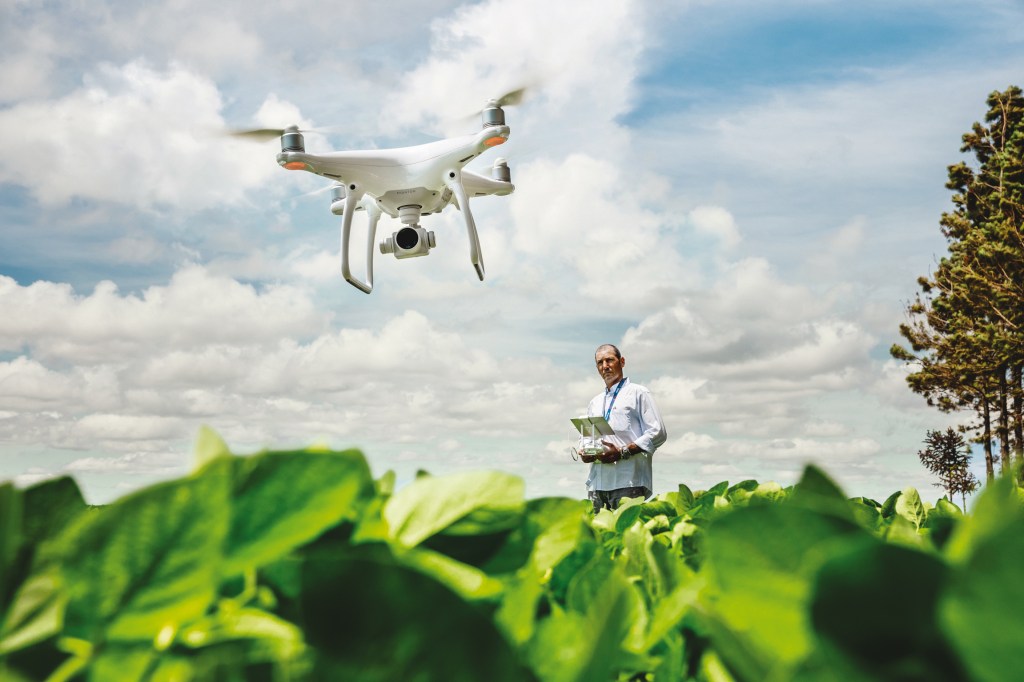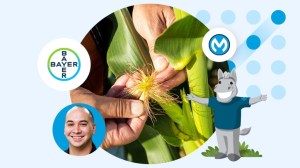On the surface, farming and digital automation don’t have a whole lot in common. Dig a little deeper, though, and they actually do have some commonalities.
Each often gets generalized and even misunderstood. Farming, for most people, elicits the romantic, live-off-the-land family operation, when in fact, today’s farming industry is incredibly high-tech, digitally-evolved, and a ‘down-to-the-ounce’ machine.
As for automation, most people’s interpretation often skews towards the negative: bots replacing humans or jobs becoming phased out and antiquated. But for most companies, automation connects dots, speeds up processes, eliminates tedium, and lets the humans working those jobs focus on what matters most – the impactful stuff.
Most of the time, automation is happening behind the scenes; but even as a silent partner, the end result for companies and their employees is impact and opportunity.
So what happens when two misjudged industries pair up? Salesforce’s MuleSoft and Bayer Crop Science are creating the perfect combination of crops in the ground and data in the cloud.
Planting the seeds of change
“There’s nothing more earthly than agriculture, but the industry is going through massive digital transformation right now,” says Matt McLarty, Global Field CTO for MuleSoft. “Agro-tech is helping agriculture industry players achieve massive scalability and utilize data in innovative ways.”

Bayer Crop Science had a tricky task ahead of them: Connecting more than 40 merger-fueled, disparate and aggregated tech systems and platforms they accumulated over the years so that they could function together and speak the same language. That’s where MuleSoft made some magic.
“Where MuleSoft is really shining for us now is connecting those legacy platforms and CRMs, leading to faster customer issue resolution time, improved accuracy and visibility, and better customer experience,” Geoffrey Hickman, Bayer’s Technical Platform Architect explains. “And honestly, our development has sped up ever since we brought in MuleSoft.”
Honestly, our development has sped up ever since we brought in MuleSoft.”
Geoffrey Hickman, Technical Platform Architect, BAYER Crop Science
Those capabilities are what make MuleSoft such a key part of the Salesforce family. Yes, they help integrate, but it’s bigger than that. Using automation, MuleSoft’s software makes seemingly impossible connections possible. It helps disparate platforms and systems work together easily in ways they couldn’t in the past. Once they’re all using the same verbiage, they can take that data and turn it into something digestible, insightful, and actionable. They simplify complex work streams that ultimately create opportunities — both business and human.
“It’s really about building a future-proof digital foundation that lets you get the most out of every capability in your organization, whether you’re streamlining customer experiences or you’re automating employee onboarding or accelerating partner acquisition,” McLarty says. “Salesforce comes to the table with all these capabilities out of the box already, so together with MuleSoft, you get an incredibly powerful combination.”
Faster solutions, bigger opportunities
That combination helped Hickman and his team in a big way recently when a legacy platform needed to be integrated into Salesforce … and fast.
“Within a 20-minute call, our developers got real access to their platforms, which would have taken at least a week to facilitate that with our old system,” Hickman says. “The speed at which we’re able to do things now is amazing.”
That time saved frees up his developers to get through their queues quicker and easier, with fewer technological headaches and back-end complications. It creates breathing room for bigger thinking, focus, opportunity, growth, and democratization of existing tools.
“Ultimately, it helps create empowerment,” McLarty says. “We tend to have a huge reliance on this small group of people we call software developers. But developers are a small, small slice of the population, so what we’re focused on is making it easier for everyone in an organization to build digital solutions. That means more people are enabled to solve problems, and more work gets done easily and quickly.”
We tend to have a huge reliance on this small group of people we call software developers. But developers are a small, small slice of the population, so what we’re focused on is making it easier for everyone in an organization to build digital solutions.”
Matt McLarty, Global Field CTO, MuleSoft
And whether you’re growing crops, producing sneakers, or building digital experiences, one thing rings true: Speed can make or break your business, and all speed isn’t created equal. There’s short-sighted fix-this-thing-right-now-to-get-it-done speed, and then there’s strategic, bulletproofed-for-the-future speed that creates efficiencies and new solutions. The latter is where MuleSoft likes to play.
“People and organizations are very focused on velocity. Everyone wants to just move fast,” McLarty says. “But they have a tendency to paper things over and maybe come up with solutions that are throwaways. By giving people the tools to build solutions that solve their problems right now while also building them in a way that’s structured for the long term, there’s a cumulative acceleration effect.”
And with MuleSoft deployed, Bayer Crop Science saw a 200% boost in product development speed. Perhaps even more impressive? Their products are getting to market five times faster than they were before MuleSoft.
‘The sky’s the limit’
That velocity is already happening inside the walls of Bayer Crop Science – and thanks to its success within that business unit, MuleSoft is now being deployed throughout the whole Bayer organization. That means the learnings and wins that Hickman and his team helped make happen can be shared, improved upon, and iterated for whatever bespoke needs there might be within Bayer.
“The sky’s the limit, and once those teams realize the increased velocity that they can deliver products, the possibilities are very high,” Hickman says.
McLarty also has a big sense of optimism for what’s to come for MuleSoft – especially when thinking about strength in numbers — teaming up with other companies within the Salesforce network.
“I’ve been in the industry a long time, and basically the problems never change, but the solutions do evolve. I feel like we’re at that point where every company is seeing a need to build a digital headquarters, create deeper connections with their customers, unify data, and automate tasks. Across the Salesforce Customer 360 platform, including MuleSoft, Tableau and Slack, we’re constantly figuring out new ways for our customers to do exactly that, and to succeed not just now, but in the long-run.”


